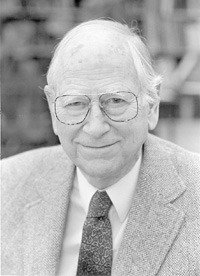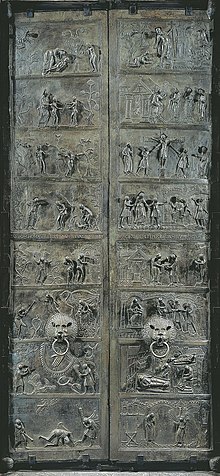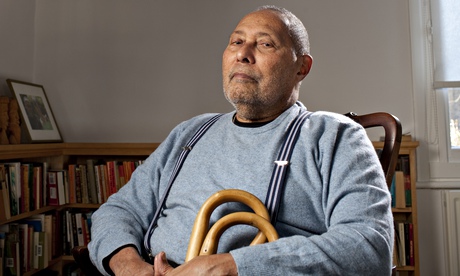Artichoke (朝鮮薊,雅枝竹),也斯: 豹的步伐與雅枝竹的芳容 / Ode To The A...
穆佐書簡:里爾克晚期書信集Briefe aus Muzot(簡體書)
本書是奧地利詩人里爾克(Rainer Maria Rilke)晚年的書信集,是詩人在瑞士穆佐生活時期留下的一筆珍貴遺產。這里收集了129封書信,時間從發現穆佐的1921年直到詩人逝世前不久的1926年底。
在 書信中,里爾克常常談論自己的作品,創作的背景和動機,種種經驗、思考和感悟,涉及苦難、愛和死亡這三大主題,語言直接,表達清晰,對幫助讀者加深理解大 有裨益。在許多書信中,里爾克娓娓敘來,隨意道出了個人生活的各個側面,許多鮮為人知的情況和細節,甚至在他的傳記里也很難讀到。通過這些文字,人們可以 比較具體比較真實地了解他的性格和氣質,他的品行和他作為常人的一面,了解里爾克其人,這樣會覺得嚴峻的詩人親切一些,容易接近一些,可能也有助于讀者進 入他的作品。
里爾克說一個詩人手上必須有兩支筆,一支寫詩,一支寫信,二者不能混用。寫信的筆記錄事實,主要為朋友講述自己的生存境況,它是非抒 情的。這也正是《書簡》的語言特點,質樸無華,平實卻不平淡。有人說,要是把里爾克的文字比作一件華麗的衣袍,那么書信就是襯里,這襯里實在精致,叫人有 時忍不住翻過來穿。
-----
林笳編的《里尔克集》
林笳編的
昨天讀 Rilke的羅丹演講和
羅丹藝術論
(這本書沒交待原書和翻譯者)
定價: NT 140 (本) 售價: NT 123 (本) 補貨中
05-002 羅丹藝術論
雄獅美術編 . 25開/平裝/ 172頁 . ISBN 957-9420-41-6 羅丹是近代浪漫主義的雕刻大師,在藝術史上他最大的成就是提倡直接模擬自然、表達真實的情感,同時他又能精研三 度空間的理論和技法,影響當時及其後的藝術界至深且鉅。本書由羅丹口述,文藝批評家葛賽爾筆記,全書採取對話方式娓娓寫來,文筆清新流暢,是一部在西方藝 術界裏廣為流傳,燴炙人口的經典之作。
羅丹是近代浪漫主義的雕刻大師,在藝術史上他最大的成就是提倡直接模擬自然、表達真實的情感,同時他又能精研三 度空間的理論和技法,影響當時及其後的藝術界至深且鉅。本書由羅丹口述,文藝批評家葛賽爾筆記,全書採取對話方式娓娓寫來,文筆清新流暢,是一部在西方藝 術界裏廣為流傳,燴炙人口的經典之作。 │得獎紀錄│書評介紹│序文摘要│目錄│作者簡介│套書介紹│名人推薦│延伸閱讀│閱讀心得交流│
【延伸閱讀】
◆ 羅丹雕塑
◆ 關於羅丹--日記擇抄TOP 【序文摘要】
◆ 序 葛賽爾TOP 【目錄】
遺囑
序
第一章 藝術中的現實主義
第二章 對藝術家,自然中的一切都是美的
第三章 塑造
第四章 藝術中的運動 第五章 素描與色彩
第六章 女性美
第七章 古人和今人
第八章 藝術的思想性
第九章 藝術的神秘性
第十章 菲狄亞斯和米開朗基羅
第十一章 藝術家的貢獻
Artichoke (朝鮮薊,雅枝竹),也斯: 豹的步伐與雅枝竹的芳容 / Ode To The Artichoke by Pablo Neruda,Letters of R. M. Rilke 1892-1910
豹的步伐與雅枝竹的芳容
修道院的中午,正在吃午飯,愛絲在對面坐下來,碟子裡只有幾枚雅枝竹,真是吃得清爽。她把葉子一片一剝下來放進嘴裡,吃得津津有味。我不禁想到聶魯達(Pablo Neruda)的《給雅枝竹的公?詩》:
不過然後馬莉亞來了/帶着她的籃子/她選一枚雅枝竹/她不害怕它/她檢驗它/觀察它……
喜愛意大利和法國文學的編輯愛絲說她不知道這首詩。但愛絲懂得雅枝竹,又喜歡吃它,反而好像幫助我更進一步去了解聶魯達的詩。
這使我想起,幾天前臨離開巴黎,與女兒遊河上岸,無意中踏進植物公園,看見籠子裡的豹,想起不正是里爾克(R.M. Rilke)寫過的豹嗎?現實的事物驟眼看來跟詩中寫的完全兩樣,只不過,耐心留駐、留神細看,又會看出一些端倪!
怎麼樣?
里爾克有名的〈豹〉(Der Panther)詩,正寫於他初抵巴黎,學習觀察世界的階段。他從羅丹學會觀看,塞尚™七年在巴黎秋季的紀念展覽給他留下不可磨滅的影響。他入迷地吸收法國文化精妙之處,又從現實細看巴黎的美與醜。他從日常細微事物入手,參觀植物園,寫出有名的〈豹〉。我們年輕的時候,耳熟能詳的是這樣的句子:
牠的眼前劃過一道道鐵柵眼光疲倦再也看不見甚麼看出去好似有成千的鐵柵成千的鐵柵以外沒有天地
到 年紀大了,自己嘲諷自己:不要老談詩,人家會不耐煩的。到出差講學、與女兒旅行,更不想老是執著自己喜歡的詩,不一定要流連書店,不必要用詩行中的經驗來 代替生活的經驗,也就沒有特別尋訪文學家的足跡了。坐船遊河,上岸稍歇,中步入植物園,女兒喜歡白犁牛,麋鹿和駱駝,信步走來,竟也走到豹的籠前了。我也 是第一次來到。看著豹在那兒踏步,突然想到未想強記的詩人、忘懷了的詩句……只不過,籠裡是比較寬敞的空地,有樹葉和枝枝,豹也有可以走動的空間、可以隱身的岩石和樹叢。我忍不住想:自己過去從詩中體會的想像:是豹囚在狹窄的鐵柵囚籠裡,來回踏著沉重的步伐,而詩人通過細緻的觀察,寫出這生物沉重的肉體感受。
現在,看著眼前的豹,我不禁想:我和許多解詩人也許都錯了,我們局限在詩句的囚籠中。書本只是書本吧了。我們未必真能捕捉到現實的生態。
要 離開了。忽然又轉出一頭白色的豹,踏著「那柔韌而穩健的步伐」,向我們走來,卻又突然一個急轉圈,向那邊走過去,走了幾步,又突然一個急轉圈,拐回來。我 愕然了,空間的確是比我想像中寬敞,但這豹,在這寬敞的空間中,卻只是「兜著最狹小的圓圈踏轉」!我知道不是所有的豹都是這樣,這頭也肯定不是詩人所見那 頭豹,我和二十世紀初的詩人之間,隔了無數的豹。但我終於謙卑地對那詩的觀察有了現實的體會,令我想重讀他最早的作品。
愛 絲在吃雅枝竹,令我注意起這過去沒有特別留意的。我記得最先知道它︳還是來自讀聶魯達的詩。聶魯達除了寫美洲的歷史和地理、馬曹比曹的廢墟,也寫過蕃茄和 雅枝竹這些日常蔬果。那時香港還不常見。聶魯達寫得可愛,我想去譯它,查了一下:唔,是希臘羅馬己有的,神話裡宙斯愛上的女子,要把她變成天神,她卻懷戀 人間,宙斯一怒之下,便把她變成一株植物。盛產於南歐一帶,屬向日葵科,一年四季都有。Artichoke據說來自北意articiocco一字,有松子之意,又說來自阿拉伯文al' qarshuf,因為摩爾人也從歐洲傳入。後來法籍移民把它帶到美洲,加州也大量培植了。長大後香港買到了,有一個名字叫朝鮮薊,是不是從韓國轉傳過來?西餐桌上也吃到了。把葉子細吮,沒吃出太多的味道。還是記住了聶詩,詩更有味道!***
我 把詩告訴愛絲,她慷慨地讓給我一枚,把雅枝竹與我的詩交換。我們吃的是修道院裡種的,園丁湯姆咋天放進廚房來,還有馬鈴薯、小洋葱和杏子。我愛杏子的鮮 美,原忽略了全副武狀的雅芝竹。幸好有個悠閒的中午,一片一片葉子吃來,最後吃到清新鮮嫰的心,才終於體會到詩中末句:「剝開那美味,細啖平和柔軟青綠的 心」。
清晨醒來,看見愛絲已在山邊花園幫忙澆水。田裡的雅枝竹剛收割了,樣子看來有點頹唐。回到早餐桌上,花瓶裡盛放的紫蕊是甚麼?正是雅枝竹的花朵——它的燦爛一下子都到眼前來了!
這觸動了我,早年寫的未夠深入感受的雅枝竹斷句終於藉著生活的機緣水到渠成而成篇。愛絲說如果我把聶魯達和我的詩寄給她,她會試把它們編成一本美麗的詩畫集,以記這詩與生活的因緣。
Full text of "Letters Of Rainer Maria Rilke 1892 1910" - Internet Archive
archive.org/stream/.../lettersofrainerm030932mbp_djvu.txt
Rilke made it clear in his will that since a part of his creative energy had gone ... to a quiet stream, and he had made his discovery of Cezanne and his paintings.穆佐書簡:里爾克晚期書信集Briefe aus Muzot(簡體書)
| I S B N 13:9787508070605 |
| 作 者:(奧)里爾克 |
| 譯 者:林克、袁洪敏 |
| 裝訂: 平裝 |
| 規格(高/寬): 19*13cm |
| 出版社:華夏出版社 |
| 出版日:2012/ |
本書是奧地利詩人里爾克(Rainer Maria Rilke)晚年的書信集,是詩人在瑞士穆佐生活時期留下的一筆珍貴遺產。這里收集了129封書信,時間從發現穆佐的1921年直到詩人逝世前不久的1926年底。
在 書信中,里爾克常常談論自己的作品,創作的背景和動機,種種經驗、思考和感悟,涉及苦難、愛和死亡這三大主題,語言直接,表達清晰,對幫助讀者加深理解大 有裨益。在許多書信中,里爾克娓娓敘來,隨意道出了個人生活的各個側面,許多鮮為人知的情況和細節,甚至在他的傳記里也很難讀到。通過這些文字,人們可以 比較具體比較真實地了解他的性格和氣質,他的品行和他作為常人的一面,了解里爾克其人,這樣會覺得嚴峻的詩人親切一些,容易接近一些,可能也有助于讀者進 入他的作品。
里爾克說一個詩人手上必須有兩支筆,一支寫詩,一支寫信,二者不能混用。寫信的筆記錄事實,主要為朋友講述自己的生存境況,它是非抒 情的。這也正是《書簡》的語言特點,質樸無華,平實卻不平淡。有人說,要是把里爾克的文字比作一件華麗的衣袍,那么書信就是襯里,這襯里實在精致,叫人有 時忍不住翻過來穿。
-----
林笳編的《里尔克集》
林笳編的
晚上我自問:我可以提什麼問題呢? 不然簡直是白讀一白天。我想出的問題是:Rilke 的足蹟遍整個歐陸,自述自己覺得捷克區和俄羅斯最讓他舒服,
In this 1961 text, Professor Mason examines the complex of ambiguous attitudes which Rilke had towards Europe, in particular his hostility towards England and the English language. He proves that Rilke knew more English than he admitted, had English friends, and valued his English admirers. Professor Mason also shows that the heart of the matter is also at the heart of Rilke's poetry; that he identified England and above all America with forces which were robbing his Europe of its spiritual significance. The central passages of the Duino Elegies are thus seen from a fresh perspective. Professor Mason is writing of a genius who was also tiresome, and there is a pleasant astringent touch in many parts of the book. For readers of Rilke it is essential: written at a time when the European ideal had to be given life in England and substance in Europe, it provides any European with something to consider.昨天讀 Rilke的羅丹演講和
羅丹藝術論
(這本書沒交待原書和翻譯者)
定價: NT 140 (本) 售價: NT 123 (本) 補貨中
05-002 羅丹藝術論
雄獅美術編 . 25開/平裝/ 172頁 . ISBN 957-9420-41-6 羅丹是近代浪漫主義的雕刻大師,在藝術史上他最大的成就是提倡直接模擬自然、表達真實的情感,同時他又能精研三 度空間的理論和技法,影響當時及其後的藝術界至深且鉅。本書由羅丹口述,文藝批評家葛賽爾筆記,全書採取對話方式娓娓寫來,文筆清新流暢,是一部在西方藝 術界裏廣為流傳,燴炙人口的經典之作。
羅丹是近代浪漫主義的雕刻大師,在藝術史上他最大的成就是提倡直接模擬自然、表達真實的情感,同時他又能精研三 度空間的理論和技法,影響當時及其後的藝術界至深且鉅。本書由羅丹口述,文藝批評家葛賽爾筆記,全書採取對話方式娓娓寫來,文筆清新流暢,是一部在西方藝 術界裏廣為流傳,燴炙人口的經典之作。 │得獎紀錄│書評介紹│序文摘要│目錄│作者簡介│套書介紹│名人推薦│延伸閱讀│閱讀心得交流│
【延伸閱讀】
◆ 羅丹雕塑
◆ 關於羅丹--日記擇抄TOP 【序文摘要】
◆ 序 葛賽爾TOP 【目錄】
遺囑
序
第一章 藝術中的現實主義
第二章 對藝術家,自然中的一切都是美的
第三章 塑造
第四章 藝術中的運動 第五章 素描與色彩
第六章 女性美
第七章 古人和今人
第八章 藝術的思想性
第九章 藝術的神秘性
第十章 菲狄亞斯和米開朗基羅
第十一章 藝術家的貢獻








 n
n ji
ji o
o u
u




















